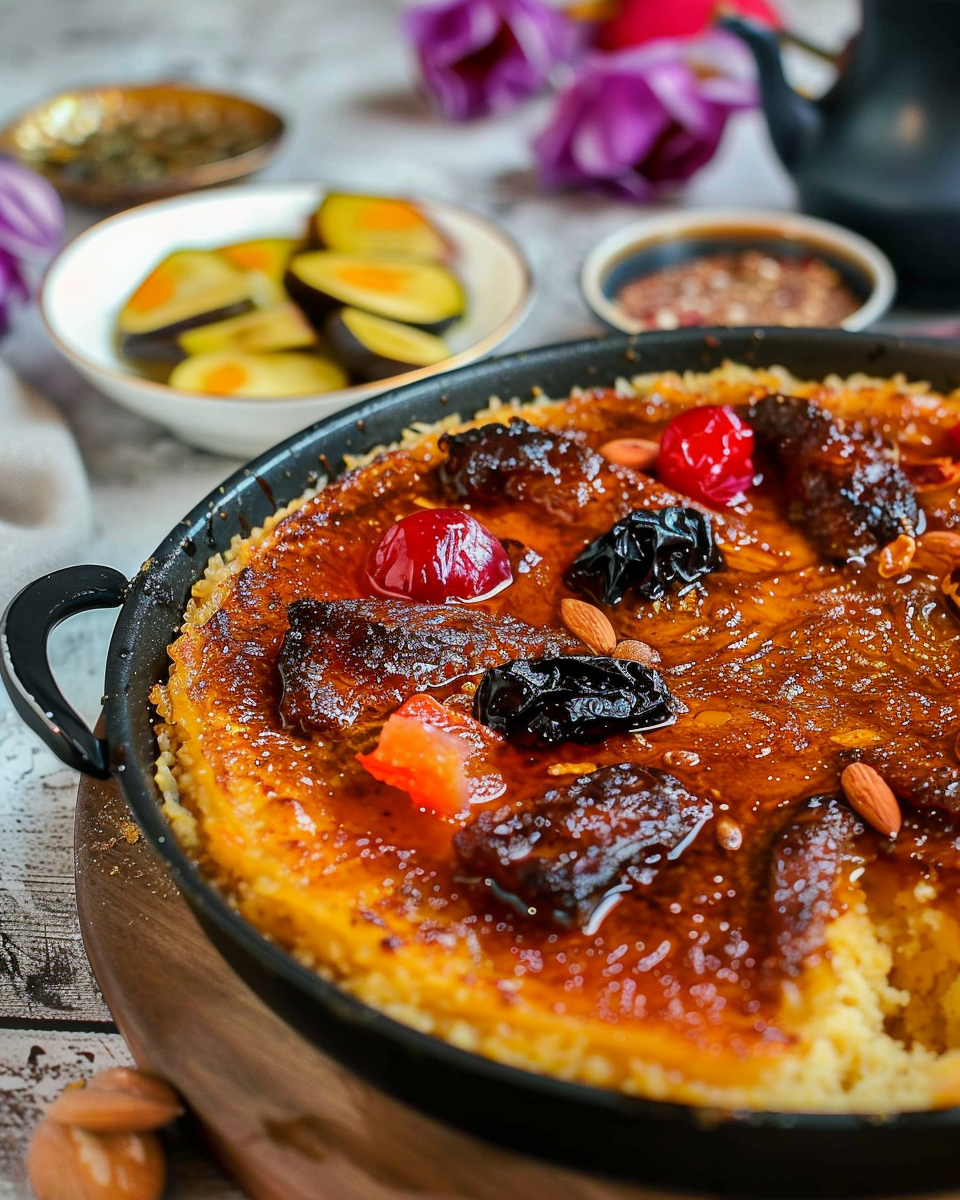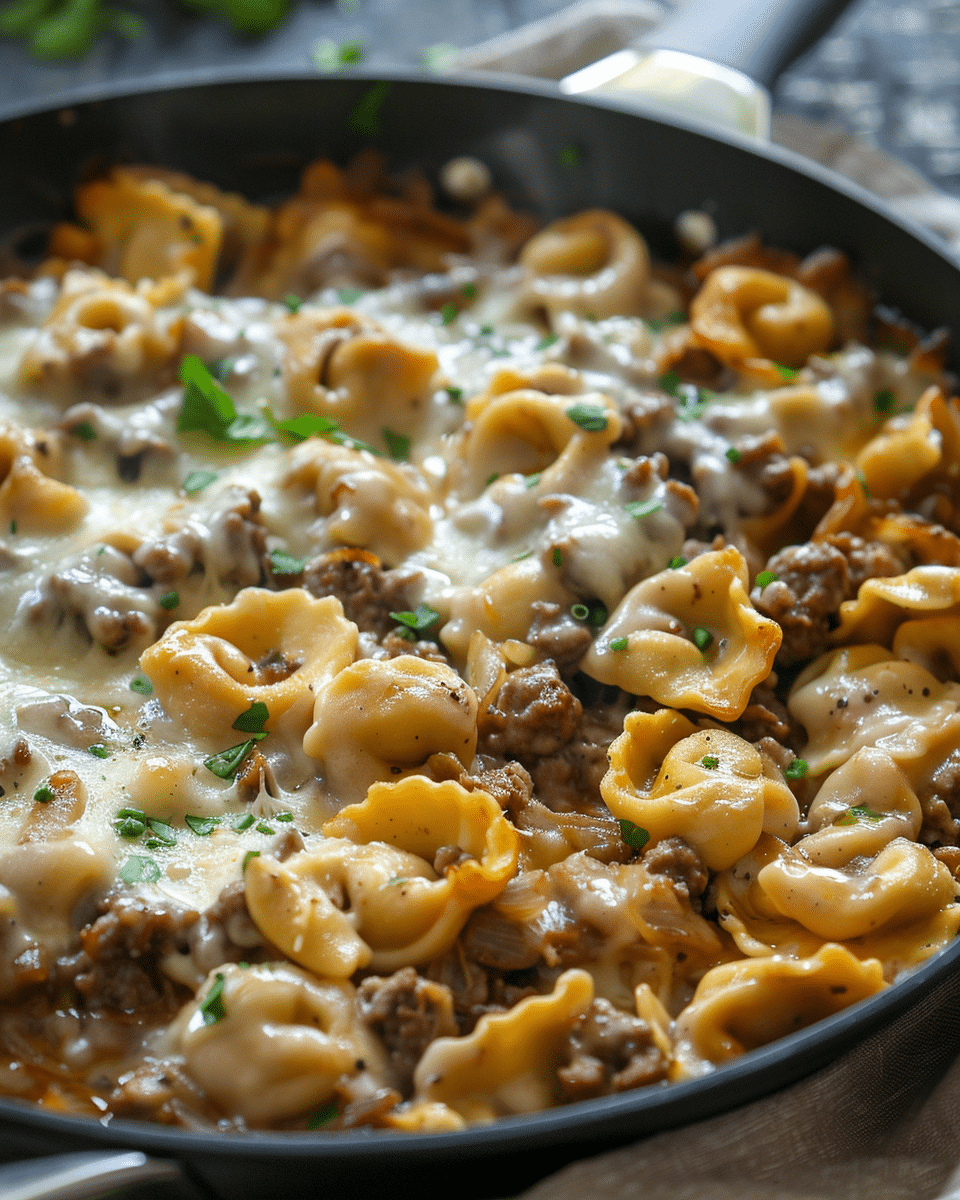Discover the rich and flavorful world of Persian cuisine with Khoresh Bademjan, a traditional eggplant stew that brings together tender meat, tangy tomatoes, and the unique sourness of dried Persian limes. This dish is a comforting, hearty meal that is perfect for any occasion, offering a taste of Iran’s culinary heritage in every bite.
Ingredients:
2 large eggplants
1 lb (450g) beef or lamb, cubed
1 large onion, chopped
2 large tomatoes, chopped
3 cloves garlic, minced
2 tablespoons tomato paste
2 dried Persian limes (limoo amani)
1/2 teaspoon turmeric
1/4 teaspoon ground cinnamon
Salt and pepper to taste
2-3 tablespoons vegetable oil
2 cups water
Fresh parsley for garnish
Instructions:
Prepare the Eggplants:
Peel the eggplants and slice them lengthwise.
Sprinkle with salt and let sit for 30 minutes to remove excess moisture.
Pat dry with paper towels.
Fry the Eggplants:
Heat vegetable oil in a large skillet over medium heat.
Fry the eggplant slices until golden brown on both sides.
Remove and set aside.
Cook the Onions and Garlic:
In the same skillet, add chopped onions and sauté until translucent.
Add minced garlic and cook for another minute.
Brown the Meat:
Add the cubed meat to the skillet, browning it on all sides.
Add Spices and Tomatoes:
Stir in turmeric, ground cinnamon, salt, and pepper.
Add the chopped tomatoes and tomato paste, cooking for another 5 minutes.
Simmer the Stew:
Poke holes in the dried limes with a fork and add them to the pot, along with 2 cups of water.
Bring to a boil, then reduce heat to low, cover, and simmer for 1.5 to 2 hours, or until the meat is tender.
Add the Eggplants:
In the last 20 minutes of cooking, add the fried eggplant slices on top of the stew and simmer until they are tender and have absorbed the flavors.
Serve:
Serve hot, garnished with fresh parsley, over a bed of steamed rice.
Conclusion:
Khoresh Bademjan is a must-try dish for anyone interested in exploring Persian cuisine. Its rich flavors and comforting texture make it a perfect meal for family dinners or special occasions. Serve it with steamed rice to soak up all the delicious juices, and enjoy a taste of Iran right at home.
📖 Recipe:
Print
Khoresh Bademjan
- Total Time: 2 hours 30 minutes
- Yield: 4 servings
- Diet: Halal
Description
Khoresh Bademjan is a traditional Persian eggplant stew made with tender beef or lamb, tangy tomatoes, and the unique sourness of dried Persian limes. This flavorful dish is perfect for a hearty and comforting meal, offering a taste of Iran’s rich culinary heritage.
Ingredients
2 large eggplants
1 lb (450g) beef or lamb, cubed
1 large onion, chopped
3 cloves garlic, minced
2 large tomatoes, chopped
2 tablespoons tomato paste
2 dried Persian limes (limoo amani)
1/2 teaspoon turmeric
1/4 teaspoon ground cinnamon
Salt and pepper to taste
2–3 tablespoons vegetable oil
2 cups water
Fresh parsley for garnish
Instructions
- Peel the eggplants and slice them lengthwise. Sprinkle with salt and let sit for 30 minutes to remove excess moisture. Pat dry with paper towels.
- Heat vegetable oil in a large skillet over medium heat. Fry the eggplant slices until golden brown on both sides. Remove and set aside.
- In the same skillet, add chopped onions and sauté until translucent. Add minced garlic and cook for another minute.
- Add the cubed meat to the skillet, browning it on all sides.
- Stir in turmeric, ground cinnamon, salt, and pepper. Add the chopped tomatoes and tomato paste, cooking for another 5 minutes.
- Poke holes in the dried limes with a fork and add them to the pot, along with 2 cups of water. Bring to a boil.
- Reduce heat to low, cover, and simmer for 1.5 to 2 hours, or until the meat is tender.
- In the last 20 minutes of cooking, add the fried eggplant slices on top of the stew and simmer until they are tender and have absorbed the flavors.
- Serve hot, garnished with fresh parsley, over a bed of steamed rice.
Notes
For a vegetarian version, omit the meat and add more vegetables such as mushrooms or zucchini.
Dried Persian limes are essential for authentic flavor, but a splash of fresh lime juice can be used as a substitute if necessary.
The stew can be prepared a day in advance as the flavors improve after sitting overnight.
- Prep Time: 30 minutes
- Cook Time: 2 hours
- Category: Main Course
- Method: Stewing
- Cuisine: Persian, Middle Eastern
Nutrition
- Serving Size: 4 servings
- Calories: 350 kcal








